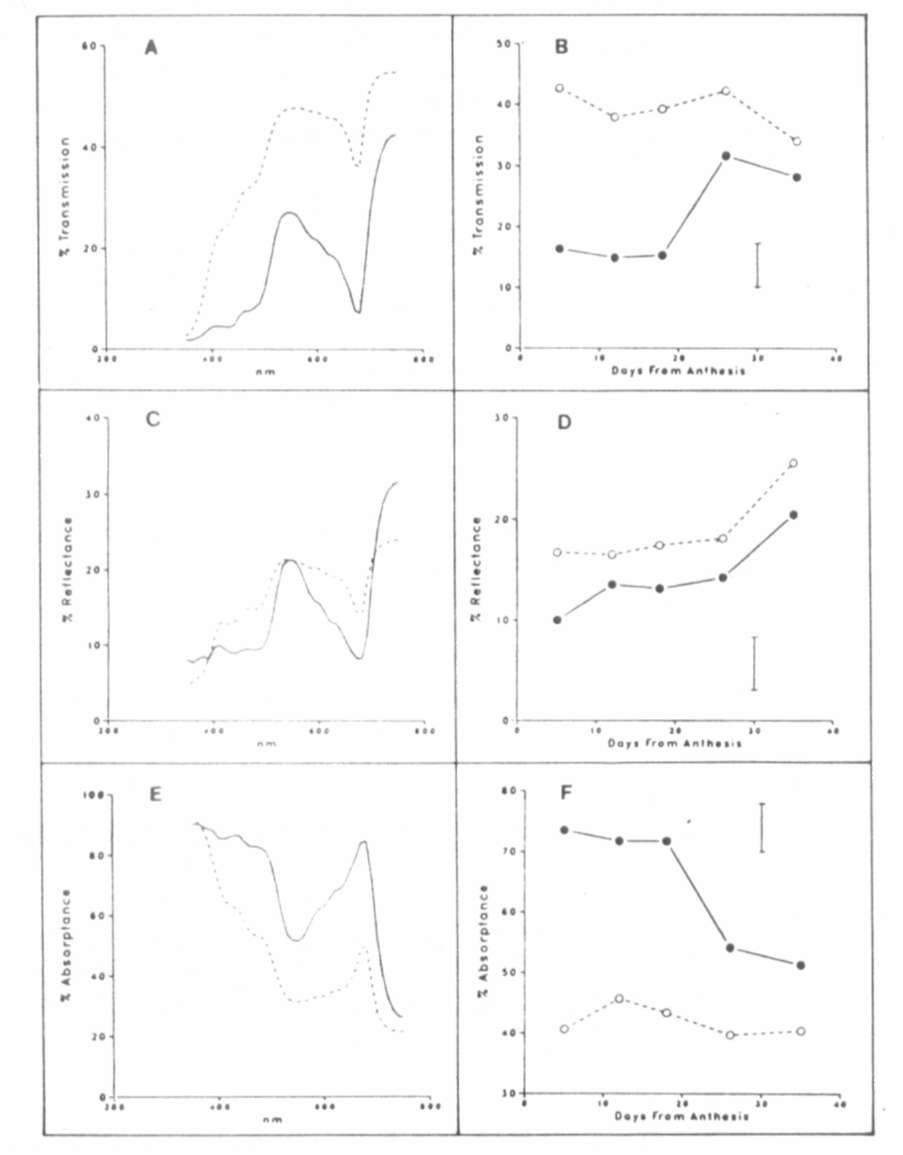PNL Volume 19 1987 RESEARCH
REPORTS 47
the seed so that higher
CO2 and lower O2 are found in the gp
pod (personal observation). Finally we have shown here that a
seed in a gp pod will also have a changed photo-environment which
may have photomorphogenic effects on seed development or on the
ability of the testa or cotyledon to produce photosynthetic meta-
bolites.
pod (personal observation). Finally we have shown here that a
seed in a gp pod will also have a changed photo-environment which
may have photomorphogenic effects on seed development or on the
ability of the testa or cotyledon to produce photosynthetic meta-
bolites.
In conclusion, seeds in gp
pods develop in a different nut-
ritional, gaseous, and photo-environment from those in Gp pods.
ritional, gaseous, and photo-environment from those in Gp pods.
1. Price, D. N., J. E. Hayward, and C. M. Smith.
1983. PNL
15:49-50.
15:49-50.
2. Loomis, W. E. 1965. Ecology
46(1&2):14-16.

Fig. 1. A-Transmission spectra,
C-Reflectance spectra, E-Absorptance
spectra (typical spectra are shown, these were replicated
three times). B, D, and F show the integrated area under
the transmission, reflectance, and absorptance curves from
400-700 nm against Days from Anthesis.
Key: _ Gp pods; --------gp pods.
spectra (typical spectra are shown, these were replicated
three times). B, D, and F show the integrated area under
the transmission, reflectance, and absorptance curves from
400-700 nm against Days from Anthesis.
Key: _ Gp pods; --------gp pods.
The bars
represent the Least Significant Difference at P 0.05.
*****